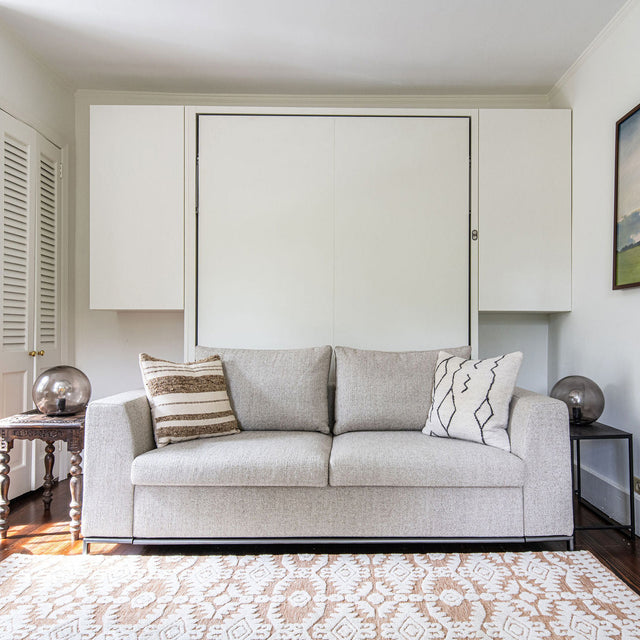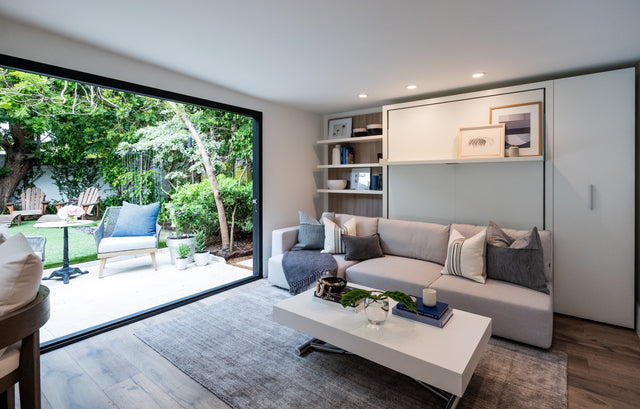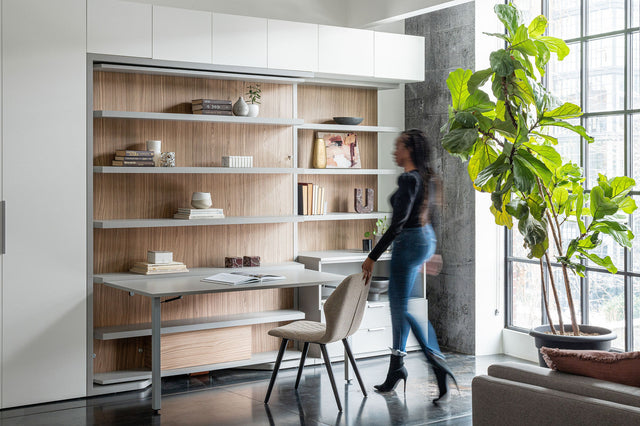Q&A with Furniture Designer Nils Frederking
The Designer who Changed How We Imagine Folding Furniture — Then Disappeared
If you’ve been online in the last 10 years, you’ve likely come across this video of a rather surprising folding dining table. And if you haven’t seen it yet…Well, trust us when we say it doesn’t fold the way you’re expecting it to:
This video, posted from the 2007 Salone Satellite exhibition in Milan, began making its rounds on social media in 2008, garnering millions of views and exuberant praise from design publications the world over. But all the while, very little was known about the designer behind this unprecedented tri-fold table design. As the internet is wont to do, no mention of the table’s creator was given in the many, many re-posts that floated their way into news feeds and forums across the web.
But the design experts at Resource Furniture — always researching new and innovative furniture concepts — were determined to track down this elusive designer and get his incredible home solution into production. So after a little investigative work we found the Berlin-based furniture designer, Nils Frederking, and the Icaro folding dining table joined our family of transforming and space-maximizing products in the summer of 2019.

To call Mr. Frederking merely a furniture designer would be a bit reductionist. In actuality, the creator behind this novel furniture concept is so much more — his portfolio spans a wide range of professions, from harp playing, to woodworking, to shoe-making, to tango instructing. A Renaissance man if there ever was one!
And in the fashion of a true creative, Nils pours copious attention to detail into his craft. As with all of his endeavors, when it comes to his furniture-making his objective is to achieve intricate, innovative designs through intuitive, simple execution — e.g. a circular dining table that miraculously folds completely flat in one smooth, easy motion.
Resource Furniture recently spoke with Nils to shed new light on the folding furniture mastermind himself. Nils gave us insights into his long career in furniture design, his process, and his inspiration behind the tri-fold table that’s poised to transform the way we think about our dining rooms.
How long have you been designing furniture?
Somewhat over two decades. I filed my first patent for a furniture folding mechanism in 1998.
What prompted you to explore furniture design?
A neighbor of friends in Paris showed me his furniture designs, which impressed me. On the way back to Berlin I had the rough idea for the folding mechanism of my F1 folding chair and tried the basic idea with a yogurt plastic cup, which I cut into pieces.
It took me some time until I was ready to build the first prototypes, as I was still studying harp and music composition at that time. But when I had an inflammation of my fingers and had to interrupt my harp playing I started with the prototypes. I built the first prototype for the F1 chair in polished stainless steel, which was quite crazy as it was very expensive. But luckily, it worked flawlessly! First prototypes are usually made, more or less, for the trash can as many prototypes are always needed to solve unexpected problems. Later I started to build the prototypes completely by myself; thus, I had to learn welding stainless steel and woodworking.
When your demonstration video went viral, how did you respond to your sudden internet fame?
I appreciated it very much. When I demonstrated the table at the Salone Satellite in Milan, there was often a crowd in front of my booth, so I was not so surprised. But I only received this high level of attention when I showed the folding mechanism, as my furniture designs are intended to be quite discrete. I do not like flashy furniture design.
Since that video made its rounds, you’ve become something of a notoriously elusive figure. What have you been up to since then?
I have done several other things. I taught tango; built hand-sewn welted shoes for myself; worked as a cabinetmaker and worked in a metalworking shop, which specialized in realizing artworks for well-known artists.
A few years ago I built an Icaro table with F1 chairs with very fine-sewed Bubinga Pommelé veneer, and I even custom-made the stainless steel concealed hinges, which connect the table top segments. The client was a Hollywood movie star.
Why folding furniture, specifically?
It may sound a bit surprising, but I was seeking the challenge, as it is much more difficult to design a beautiful folding chair or table, especially one that does not look foldable. These hidden folding mechanisms make it possible to move away from the traditional image of folding furniture as something provisional. But I also like my designs where it is evident that they are foldable. It was always important for me to invent the folding mechanics, and not simply redesign what was already available.
What are your main influences when conceiving your works?
Bauhaus and especially Mies van der Rohes, Barcelona Pavillion, and the Berlin Neue Nationalgallerie are, for me, still the gold standard for the modern era. The designs of Eileen Grey with the beautiful miter joint round and curved tubes also had a significant influence on me.
Tell us a little bit about the process behind the design. What was your inspiration for the Icaro? How did you arrive at this tri-fold design?
It started with a somewhat crazy idea. I thought about a table like a reversed umbrella, but it would evidently be too complicated; so I reduced the number of parts and it turned out that three segments worked perfectly as each tabletop segment blocks the folding of the two opposite segments when the table is opened. The next challenge was to figure out how to hold this “reduced reversed umbrella-like table top.” It took some prototypes to find the optimal design for the center joints, where the leg frames and the tabletop segments are connected in the center of the table.
Do you have a favorite piece?
Regarding the designs of other designers, it is still the “old classics” like Mies van der Rohes’ Barcelona chair or Eileen Grey´s side table.
Regarding my own designs, I am attached to every one of my folding designs as it is always a huge challenge and it is never clear whether something you imagine can be realized with the necessary properties like statics, aesthetics, ergonomics, and producibility. But the most convincing design is the Icaro, in my opinion.
-
What’s next for you?
Good question. I designed an ovoidal cabinet with an opening mechanism which is quite unique. It was very difficult to design the mechanism which is hidden in the very flat base; it took me over three months of trial and error with computer simulations. I used a computer for a design for the first time because the precision of paper and pen was much too low, so the dimensions and measurements for the mechanical parts are all ready. But it is not something for the mass market as an extremely precise and thus very costly mechanic is needed, so I’m hesitant to build a fully working prototype. Furthermore, I am thinking about designing a tiny house or, respectively, a temporary house.
-
For more information on the Icaro, Nils Frederking, or our new Transforming Table collection, contact the space experts at Resource Furniture and make an appointment at your nearest showroom today.











